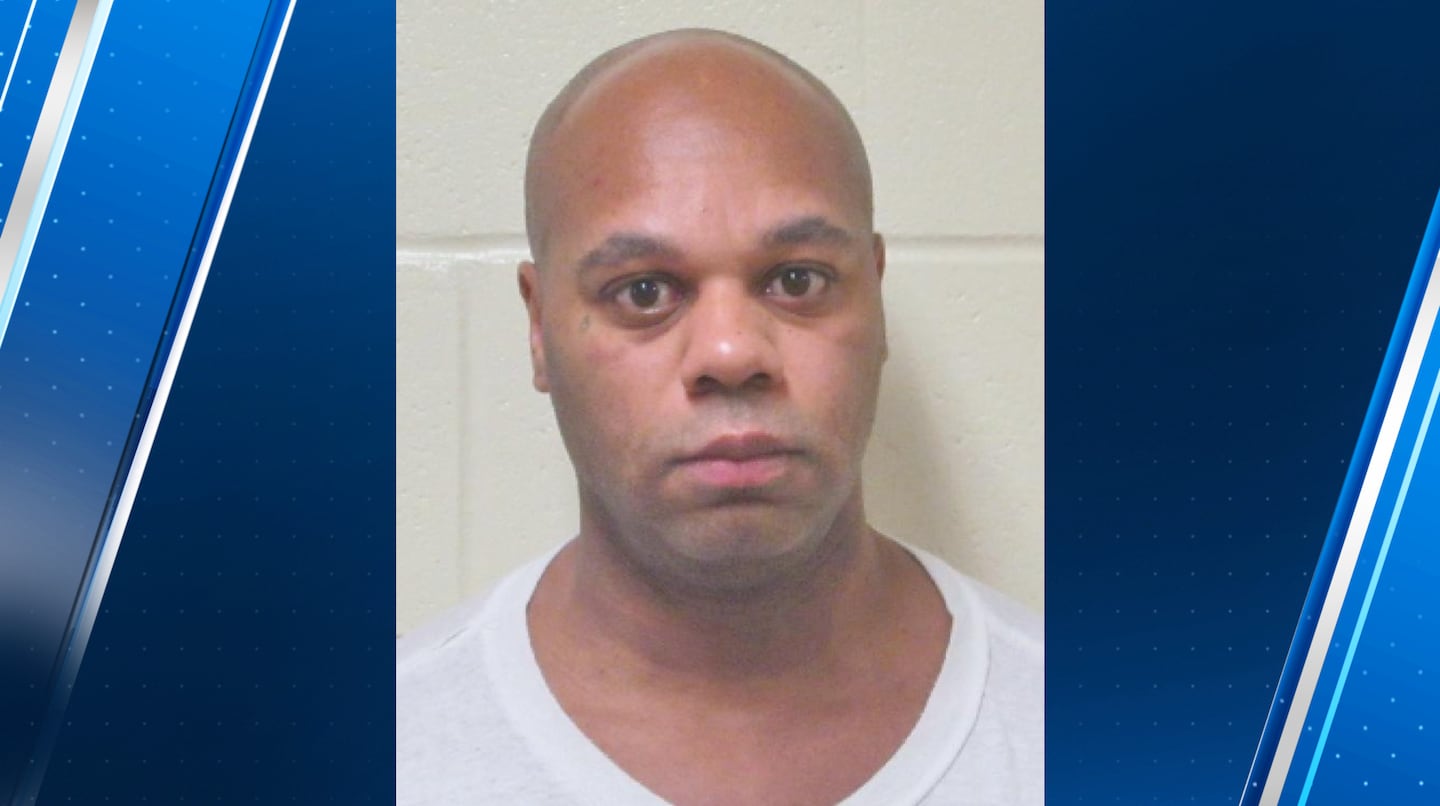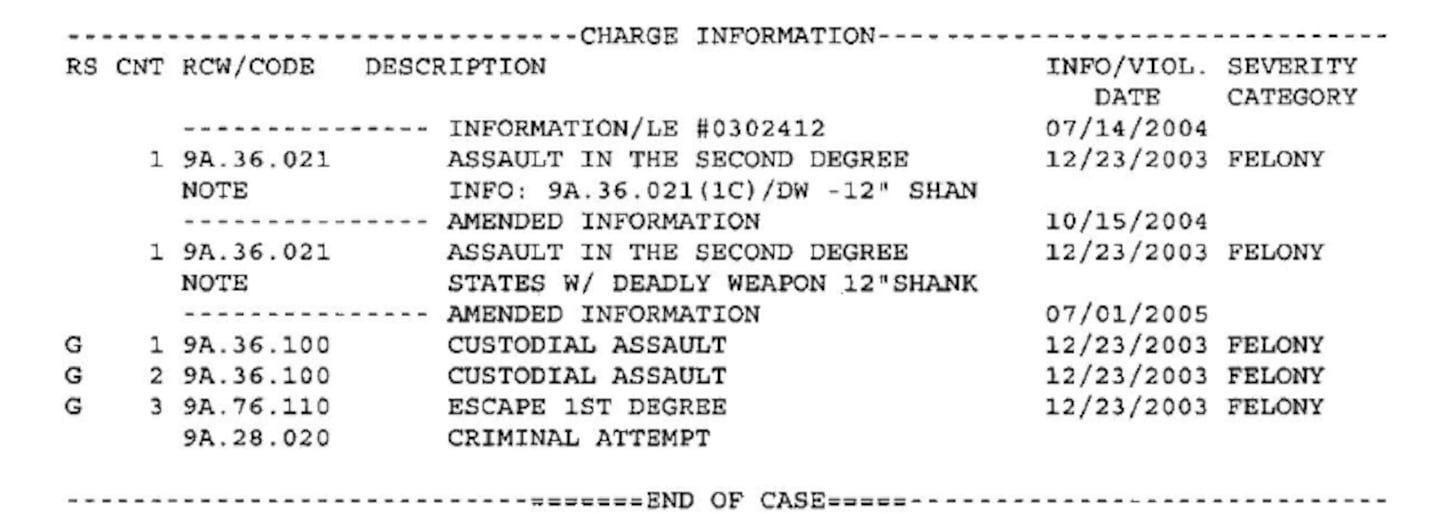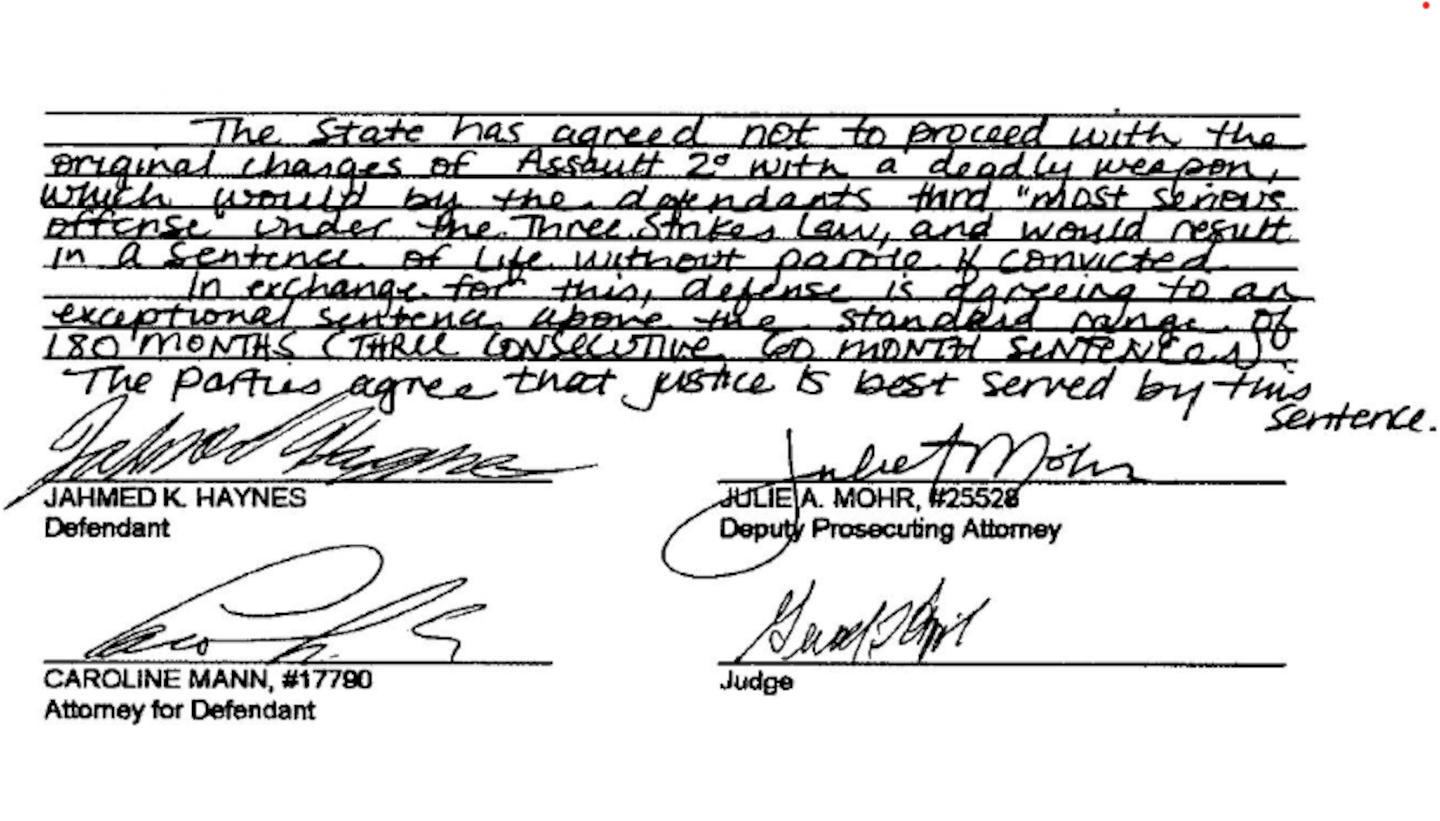SEATTLE — The law is “three strikes, you’re out,” legislation designed to keep the community safe by locking up the most violent repeat offenders for life. But what happens if the law fails? That’s what one Western Washington woman says happened when prosecutors say her grandmother was murdered at the hands of a career criminal.
It’s a story that sent shockwaves through Seattle and gained national attention.
80-year-old Ruth Dalton was murdered on August 20, 2024, in broad daylight, in cold blood.
“I think about it every day,” said Dalton’s granddaughter, Melanie Roberts, as she reflected on what would become the worst day of her life.
“All I could think about is, she was gone,” Melanie said. “I didn’t get the chance to say goodbye.”
Dalton was sitting in her car full of dogs, preparing to start her workday as a dog walker, when a man jumped into the passenger side and tried to force her out of her car.
Ultimately, the man overpowered Dalton, she went tumbling onto the road and the carjacker ran her over, crushing her with her own car, upon his escape.
Dalton’s dog, Prince, was found soon thereafter, stabbed to death in a recycling bin at a nearby park.
Dalton’s car was there too, and so was her cellphone – covered in the suspect’s fingerprints.
Those prints led police to 48-year-old Jahmed Haynes, a career criminal having spent more than half of his life behind bars.
He was arrested the next day with a knife covered in blood, and a set of keys belonging to Dalton’s car.
The details of the case are horrific and haunting.
But as for Haynes, this is just the latest in a long list of crimes and convictions past.
Haynes is an 8-time convicted felon. His rap sheet includes vehicular homicide, multiple stolen cars, drug crimes, robbery, running from police, custodial assault, and attempted escape from prison.
Yet, despite those eight felonies, Haynes never triggered the state’s 3-strike law, officially called the “Persistent Offender Accountability Act.”
“Its purpose is, to create a mechanism whereby those who commit most serious offenses are held accountable,” said Michael Held, Chief of Staff for the Snohomish County Prosecuting Attorney’s Office.
The law was passed by a voter initiative in 1993, providing prosecutors with a means to hold the most violent repeat offenders accountable, sentencing them to life in prison if convicted of a third most serious offense, or “strikeable offense.”
The list of strikeable offenses is comprised of serious felonies: murder, homicide, manslaughter, assault, kidnapping, rape, child rape, child molestation, robbery, burglary, arson, treason, vehicular homicide and assault, domestic violence felonies, extortion and felony sex offenses.
Of Haynes’ eight felony convictions, two counted as strikes.
But according to court documents, he should have had a third – 21 years before Ruth Dalton’s murder.
“A failure of the system happened,” said Roberts.
“[Haynes] never should have been out on the streets. He should have had three strikes. He should’ve been locked up for life and this would not even be an issue,” Roberts continued. “That is maddening to me that all of this was avoidable.”
KIRO7 has been covering Haynes’ most egregious crimes since his first strike in 1993.
STRIKE-1: Vehicular Homicide
Haynes, just 16, was driving drunk and recklessly in Seattle’s Capitol Hill neighborhood.
According to a Probable Cause statement, Haynes hit two cars and sped off toward a red light at the intersection of Madison and Broadway. He then drove onto the sidewalk to get around the cars stopped at the light, before blowing through the intersection.
He hit Eric Berge’s car head-on, on the driver’s side. Berge was launched nearly 100 feet from his car and died at the scene.
After the crash, Haynes took off running and found a taxicab. He asked the cab driver to take him to the Department of Youth Services Detention Center. After the driver dropped him off, he returned to the scene to tell the police what happened.
Police went to the detention center and found Haynes sitting outside the building. They arrested him there.
Haynes told police he was running from someone. His blood alcohol level was found to be 0.12 percent.
The case was denied by the Juvenile Court because of Haynes’ already extensive list of juvenile convictions, including, burglary, obstructing a public servant, two stolen cars, and two theft convictions, all in 1991 (Haynes would have been 14 or 15 at that time).
Haynes was found guilty in adult court and received his first strike from vehicular homicide.
He was sentenced to one year in prison.
Five months after his release in 1995 he was convicted of drug crimes in Pierce County and returned to prison for more than three years.
Just three months after his release in 1999 he was convicted of willfully violating community custody in Pierce County.
During that same time, he committed his next strikeable offense, Robbery in the First Degree, in King County.
STRIKE-2: Robbery
According to court documents, Haynes went up to a cashier at a Safeway store in Renton, saying, “I want all the bundles of money.”
He then “stuck a black semi-automatic pistol into [the cashier’s] side and ordered a nearby customer on the ground.”
Haynes then told the cashier he had 30 seconds to open the till or “things are gonna happen.”
Court documents state he then demanded a manager be called to the front to retrieve money from the office and safe.
Haynes stole over $600 from two tills and started kicking an office door to try to get inside, none of the managers had the keys.
At this point, customers were starting to escape through a backdoor.
Haynes left, saying, “Everybody stay here, nobody follow me.”
The manager was able to get to the roof, and the cashier ran outside so they could see where Haynes went and call the police.
Police arrived quickly and started chasing Haynes as he weaved in and out of traffic, ultimately hitting another car before spinning out and rolling.
Haynes then tried to climb out of the window.
Officers found the same amount pulled from the tills and food stamps in his pockets. They also located the gun used in the robbery; it was a BB pistol.
The car Haynes was in was also confirmed stolen.
He was convicted of First-Degree Robbery (a strikeable offense) and taking a motor vehicle without permission.
Haynes was sentenced to 7 years and 9 months at the Monroe Correctional Complex.
He was serving that sentence when he committed what could have been his third and final strike.
Haynes also received a felony conviction out of Pierce County for violating community custody during this same time.
What Could Have Been STRIKE-3: Assault with a Deadly Weapon
In late December of 2003, Haynes attacked a prison guard with a shank.
Court documents detail the incident.
The guard was told the prison gym was missing a piece of metal from a ping pong table and one of four inmates, including Haynes, were suspected of taking it.
Two guards were to search each of the four inmates’ cells – one of the guards suspected it was Haynes because just one month prior, he found Haynes was in possession of articles on how to make weapons.
The guard told Haynes to stand for inspection, instead Haynes walked out. The guard told Haynes to stop, that’s when he turned around and reached into his waistband and grabbed a piece of metal.
Documents state the shank was about a foot long, half an inch wide, and had been sharpened to a dull point.
“Haynes held the metal above his head and tried to stab [the guard].”
The guard used a clipboard to block the blow, but it was still able to puncture his DOC jacket.
The documents state Haynes continued the blows, knocking the guard to the ground – as he was falling Haynes stabbed the shank into the guard’s torso. The hit caused a bruise and pain, but never broke the skin.
Haynes continued the attack once the guard was on the ground, using overhead thrusts to try to stab him.
Finally, the guard was able to kick Haynes and get enough space to get off the ground and run.
Haynes chased him to the second floor, but the guard was able to get into a secure and locked booth.
Haynes continued pacing in front of the booth, a specialized prison team arrived, but Haynes didn’t give up, “he just smiled and held his weapon.”
Haynes was charged with one count of second-degree assault with a deadly weapon (a strikeable offense) and one count of attempted prison escape.
After the attack, Haynes underwent a mental evaluation and was sent to Western State Hospital for a 90-day competency restoration period. The state approved forced medication.
A December Department of Social and Health Services (DSHS) report detailed a history of refused medication and mental disorders, including schizophrenia and antisocial personality disorder.
The mental evaluation also detailed his upbringing stating his father was in prison, his mother moved to Seattle and remarried, he stayed with his grandparents often, and dropped out of school in the 10th grade. The report also noted his first psychotic break in 1997 with paranoia and bizarre behaviors.
Another DSHS forensic psychology report from the following June stated the forced medication was working and that he was not exhibiting any psychotic symptoms.
However, the doctor also noted, “[Haynes] specifically noted that he does not intend to continue taking his medications when transported back to jail.”
“If [Haynes] discontinues his medications, which he says he will, he will most likely decompensate in a rather short period of time.”
In the report, the doctor also noted, “[Haynes] said he has two strikes against him and if convicted, he could be facing “life in prison” because this would qualify as a third strike if he is found guilty as charged.”
Haynes shared his account of what happened with doctors, stating, “I felt everyone was against me.”
Haynes explained he planned the attack to “protest” the medications he was being forced to take while incarcerated. Admitting he took the pole and sharpened it so he could shank the officer with it.
Haynes said the DOC officers kept giving him write-ups for refusing medication, and said he “wasn’t thinking clearly on the medication.”
Haynes also admitted to targeting the officer who had put him in segregation following his infraction for possessing articles on how to make weapons.
Haynes said he had planned to attack the guard in the med line but was surprised with the inspection, so he decided to do it then instead.
Haynes also admitted the attack was premeditated, saying he had been planning it for a week and believed by attacking the guard the meds would no longer be forced, “I thought they would leave me alone and stop searching my cell.”
Officers also found a sock full of bars of soap in Haynes’ cell after the attack, which they believe was also intended to be a weapon.
The doctor left one bombshell sentence at the end, saying Haynes would be “at high risk for committing future criminal acts jeopardizing public safety and security due to his past illicit behaviors, lack of insight into his psychiatric condition, stated intention to discontinue medications; personality disorder, and possible substance use problems.”
The Plea Deal
Despite the DSHS evaluation, Snohomish County Prosecutors struck a plea deal, giving Haynes three lesser felonies, and a second chance on a third strike.
The assault with a deadly weapon charge was substituted for two counts of custodial assault and one count of attempted prison escape – none of which are strikeable offenses.
The case was held in Snohomish County because the attack occurred in Monroe at the Monroe Correctional Complex.
We took our questions to Michael Held, the Snohomish County Prosecuting Attorney’s Office’s new Chief of Staff. Held wasn’t involved in the Haynes case, but he can provide insight.
“Knowing we have somebody who is very mentally unstable, who’s saying, they likely will be unstable again in the future… but we don’t want them in jail for life?” KIRO-7’s Elle Thomas asked.
“Well, you are right to read that and recognize that that would create some concern. But again, you’re going to be looking at the evidence you have in front of you and whether or not you can prove that case. and if you can’t, what is the outcome?” Held said.
“If the jury could not agree unanimously that an assault with a deadly weapon occurred, but an assault still occurred, then could find that the defendant committed an assault in the fourth degree, of course, assault in the fourth degree is not a strike offense and has a maximum penalty of one year in jail,” Held explained. “That person is released from jail with only a fraction of the 15 years that we could have secured.”
And that’s what Haynes got, 15 years and a second chance on a third strike.
In a statement of guilt, the state acknowledged the deal bypassed a third strike, writing, “The parties agree that justice is best served by this sentence.”
We handed that same document to Melanie.
“Justice best served… and that, it sickens me, and I want to ask these people if it was their loved one that he ran over, if they thought that 180 months was justice best served,” Roberts continued.
“Do you think prosecutors made the right choice?” Elle asked Held.
“I do. Yes,” Held answered.
“The only way we get to assault two [the strikeable offense], in this particular case is because of the shank,” Held said. “But the blows were either deflected or did not cause injury.”
“The case would go away completely if the jury found that it was not a deadly weapon,” Held continued.
Held said ultimately the facts of the case and the likelihood of securing a conviction will direct the prosecutor’s decision. But there are other things that can be taken into consideration, like the suspect’s age, history of mental illness, life circumstances, and even rehabilitation options outside of the prison system.
Hayne’s checked all those boxes being just 29 at the time, a diagnosed schizophrenic with multiple personality disorder, an upbringing in a strained household, quitting school after ninth grade, in and out of homelessness, a history of drug abuse, and a number of crimes committed as a juvenile.
But after 22 years, we can only speculate as to why prosecutors decided to opt for a plea deal instead of pursuing a third strike.
The judge who presided over the case has since passed away.
The prosecuting attorney can’t be reached.
Haynes’ defense counsel told us she has no “recollection” of the case.
But perhaps the most telling, now decades later, the prison guard Haynes attacked declined an interview because it was so “traumatic.”
“Prison guards aren’t safe from this man. Why isn’t my 80-year-old grandma considered safe? Why’d they let him out?” Roberts said. “It sickens me. It really just disgusts me that they think that that was justice best served.”
Now, it’s like history is repeating itself.
Haynes was found incompetent to stand trial in the weeks following Ruth’s murder.
He was then sent to Western State for 90 days where medication was forced.
He was found competent to stand trial in December.
Then he went back to jail where he once again refused the medications.
And just like that, the cycle restarts.
“Due to symptoms of a mental illness, he lacks the capacity to assist in his defense,” Judge Rothrock said at a competency hearing in late April.
“The report indicated medications that may be necessary to restore competency,” Judge Rothrock continues. “[Haynes] will, of course, have due process rights.”
“This state is all about their rights, the criminal’s rights,” Roberts said. “He doesn’t want to medicate; you can’t make him… He doesn’t want to appear; you can’t make him… He doesn’t want to do this; you can make him, it’s his choice.”
“I’m sorry, but I don’t have any more choices here, my grandmother doesn’t have any more choices here, I don’t give a damn about his choices,” Roberts continued.
“The scales are not even in our justice system. They are heavily in favor of coddling people like Haynes, and they completely are forgetting about people like my grandmother,” said Roberts.
“It needs to change,” she continued, “Three strikes needs to be three strikes.”
Roberts said she supported some legislation this legislative session to address judicial release decisions and community custody violations. The bill would have required judges to hold suspects in jail or provide written explanation for low or no bail decisions, particularly for violent crimes. It would have also increased penalties for escaping community custody.
The bill did not make it out of committee.
“I challenge Washington in general, the voters, the lawmakers, to step up and to help the rest of us,” said Roberts. “Because we shouldn’t have to fight for ourselves. They should help us. They should defend us. They should support us, not those that are making us victims.”
Roberts said the group “Friends of Madison Park” is working to secure permitting to create a permanent memorial to Ruth and her dog, Prince, in Madison Park. It will likely be a bench with a refillable dog bowl attached.
The money will be paid for with funds raised through their GoFundMe page. Roberts said any extra funds will be donated to a few of Ruth’s favorite charities.
To donate, click here.
As for Haynes, he has been charged with first-degree murder, assault, and animal cruelty (all with a deadly weapons enhancement) in Ruth’s death.
If convicted on either the murder charge or assault charge, Haynes will receive his third strike.
Haynes is currently undergoing a second 90-day stint at Western State Hospital. It will end in July at which time we will find out, once again, if he is competent to stand trial.
©2025 Cox Media Group








